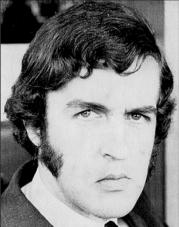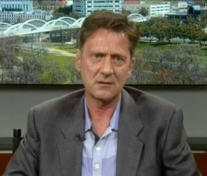The comprehensive Spinwatch study by Dr Niall Meehan, Journalism & Media Faculty, Griffith College, Dublin, highlights a catalogue of bewildering failures and cover-ups by the authorities, which enabled Dr Morris Fraser to remain on the Medical Register, despite being twice convicted (in 1972 in London and in 1974 in New York) for child abuse. Fraser continued to abuse children and also used his medical status to enable other paedophiles (such as Peter Righton and Charles Napier) to gain access to vulnerable children. Fraser was finally jailed for a year in 1992 (for possession of pornographic photos of children Fraser took). Fraser ‘voluntarily’ ceased to be a doctor in December 1995.
Fraser had access to vulnerable children and sexually abused them as a doctor for a period of some twenty three years after he was first convicted of child abuse.
Background and Detail
 From 1971-73 Fraser was a well-known and often-quoted Senior Psychiatric Registrar at the Royal Victoria Hospital, Child Guidance Clinic in Belfast. In 1973 Secker and Warburg published Fraser’s Troubles related book Children in conflict. It was re-published by Penguin in 1974 and 1979, and in 1977 in the US by Basic Books.
From 1971-73 Fraser was a well-known and often-quoted Senior Psychiatric Registrar at the Royal Victoria Hospital, Child Guidance Clinic in Belfast. In 1973 Secker and Warburg published Fraser’s Troubles related book Children in conflict. It was re-published by Penguin in 1974 and 1979, and in 1977 in the US by Basic Books.
In 1971 Fraser came to the attention of the RUC for sexually abusing a 13-year-old Belfast boy in London.
The Metropolitan Police and the RUC failed to inform Fraser’s employer, the Belfast Hospitals’ Authority.
Fraser was convicted in London in May 1972 and was bound over not to re-offend for three years.
This was not reported by any media outlet. His conviction was kept secret by the authorities.
After the conviction, Fraser’s employers were still not told. As a result, Fraser’s professional standing, media celebrity, and access to children, remained unaffected.
Abuse Fraser perpetrated during this period was made possible by a deliberate police cover-up of Fraser’s arrest and conviction.
Between 1973 and 1975 the Disciplinary Committee of the General Medical Council considered Fraser’s fitness to practice medicine in the light of his 1972 UK conviction.
The GMC revealed Fraser’s 1972 UK conviction in July 1973–only because newspapers reported that Fraser was sensationally arrested in New York two months earlier in May 1973 for new paedophile crimes.
While bound over by a UK court from May 1972, Fraser was part of a New York paedophile group who were sexually abusing children.
The GMC ignored Fraser’s May 1973 US arrest and his February 1974 US guilty plea.
The GMC colluded with police in preventing full knowledge of Fraser’s crimes from becoming public knowledge.
Fraser was accused by the GMC of engaging in a single sordid act of abuse in London. As exclusively revealed in Meehan’s study that was a lie. Fraser had a co-accused who abused another Belfast boy, a 10-year-old, at the same time and in the same place as Fraser.
It is also exclusively revealed that Fraser’s crime was finally officially notified to the Belfast Hospitals’ Authority one year late, in May 1973, one week after his publicised US arrest and after he was already suspended.
Though Fraser was arrested in New York in May 1973 and pleaded guilty in February 1974, Fraser’s re-offending was not brought to the attention of the UK courts. UK and Irish media ceased reporting Fraser’s US abuse after May 1973 (of southern Irish media, only the Irish Press reported Fraser’s May 1973 US arrest).
Despite the GMC being aware of this second, though ignored, US offence, it never once considered it. The GMC Disciplinary Committee determined in 1975 that the twice-convicted (on two continents) paedophile could continue practicing medicine with no stated restrictions. As a result Fraser used his professional status to rebuild his profile in Britain and to gain access to children. In 1981 Fraser even provided fellow predatory paedophile Peter Righton with a character reference for another paedophile, Charles Napier, to successfully overturn a teaching ban on Napier.
Fraser was convicted in 1992, for a third time, of possessing and distributing over 1,000 images of child pornography on or before 13 May 1987, most of which were photographs Fraser took at home and abroad. Finally, Fraser was sent to jail for a year.
Despite this conviction, Fraser continued to operate a paedophile scheme he set up in Cornwall in 1988 called Azimuth. It was based on a large French paedophile operation École en Bateau, with which Fraser was also associated. Fraser used his medical credentials to select vulnerable boys who were sent on sailing trips with a paedophile ‘skipper’, Michael Johnson. In 1994 the latter was convicted and jailed for four years on six specimen charges of assaulting two boys aged nine and eleven. Fraser escaped prosecution and later fled to Holland.
Despite Fraser’s known paedophile activities and convictions, his role, to 1973, in selecting and allocating children to homes, including Kincora, in Northern Ireland has never been examined.
 Former Kincora inmate, Richard Kerr, has already stated publicly that he was abused by Fraser when he was in another home in Belfast: “I was 13. Morris Fraser abused me, in his office, two or three times on those visits. I will never forget that face. That black hair. I have never forgotten it. He was in contact with children’s homes all over Belfast.”
Former Kincora inmate, Richard Kerr, has already stated publicly that he was abused by Fraser when he was in another home in Belfast: “I was 13. Morris Fraser abused me, in his office, two or three times on those visits. I will never forget that face. That black hair. I have never forgotten it. He was in contact with children’s homes all over Belfast.”
Government Inquiries carried out by Sir George Terry and Judge William Hughes have studiously ignored Fraser. Why were the authorities been so lenient with Fraser? Why was a Freedom of Information request regarding Fraser turned down in 2015 for reasons of national security?
Fraser’s victims need to be told. One thing is certain, the full story has still not been unravelled.
This study fills in many of the gaps.